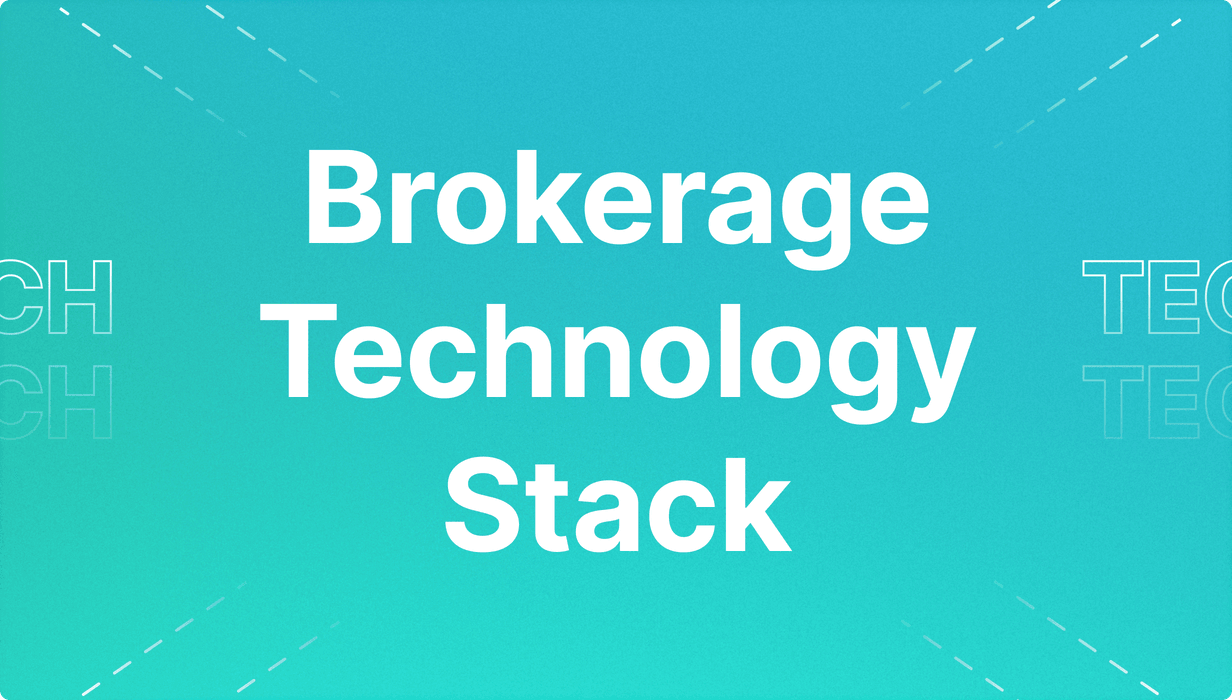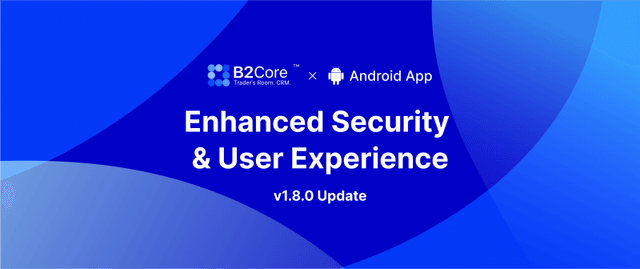Understanding the Brokerage Technology Stack: Guide to Scale Your Business

Behind every successful brokerage isn’t just a slick trading app or a smart sales team — it’s a powerful, invisible engine: the technology stack. It’s what keeps trades flowing, clients onboarding, and compliance in check. Most traders never see it.
But they feel it in every seamless transaction and real-time execution. In a market that moves fast and scales faster, your brokerage tech stack isn’t just infrastructure — it’s your competitive strategy.
In this guide, we’ll unpack what makes a modern stack work, what tools matter most, and how forward-thinking brokers are using tech to lead the market — not chase it.
Key Takeaways
- A powerful brokerage technology stack enables seamless, scalable, and secure operations.
- Modern brokers require tools such as CRM systems, liquidity aggregators, and cryptocurrency payment processors to remain competitive.
- Emerging technologies, such as AI, blockchain, and low-code tools, are shaping the future of brokerage operations.
What is a Brokerage Technology Stack?
A brokerage technology stack is the holistic assembly of digital platforms, tools, and infrastructures that underwrite a brokerage company's operations, client services, and interactions in the marketplace. It is the technological backbone that underpins everything from client onboarding and trade execution to compliance, liquidity management, and business analytics.

Fundamentally, the brokerage tech stack is split into a number of major layers. Client-facing applications, web portals, and mobile apps make up the front-end layer. Here is where clients experience the brokerage — see live prices, place trades, handle portfolios, and utilise support services.
In the background, the back-end infrastructure handles essential operations such as routing orders, liquidity aggregation, matching of trades, margin computation, and data storage. Such infrastructure should provide high reliability and low latency so that the experience of trading is seamless.
AI-powered analytics can reduce operational risks and compliance violations by over 30% in modern brokerages.
Key Layers of the Brokerage Technology Stack
Running a brokerage isn’t just about matching buyers and sellers anymore. Today, it’s about delivering a seamless, secure, and smart trading experience — and that depends heavily on your technology stack.
Think of it as the digital “engine room” of your brokerage. Each layer of the stack plays a unique role, and when they all work together, your business can scale with confidence.
Let’s break it down.
Client-Facing Layer (Front-End)
This is where your clients interact with your business — the face of your brokerage. It includes trading platforms (such as MT4, MT5, cTrader, or custom solutions), mobile apps, web terminals, and Trader's Rooms. A clean, responsive, and intuitive interface isn’t a luxury — it’s a necessity.
If your front end is clunky or outdated, traders will simply leave. Fast execution, real-time data, and a frictionless user experience are what keep clients coming back.
Trade Execution and Matching Engine
Behind the pretty front end lies the powerhouse: the trade engine. This component processes all client orders, matches them internally or routes them externally (to liquidity providers), and ensures accurate, timely execution.

Low latency is the name of the game here — milliseconds matter. A well-optimised engine also supports multi-asset trading, efficiently handles slippage, and ensures fair pricing.
Payment Gateways and Wallet Systems
Funding and withdrawals need to be fast, secure, and flexible. This layer integrates your stack with payment service providers (PSPs), including traditional banks, credit cards, and crypto wallets.

It also includes client wallet systems, internal transfers, and multi-currency support. The more seamless the funding process, the more trust you earn — and the faster users start trading.
Analytics, BI, and Automation
Last but not least, the analytics and automation layer brings intelligence into your operations. From client behaviour and trade patterns to business KPIs and campaign performance, this layer transforms raw data into actionable insights.
Automation tools can also streamline processes like email notifications, client segmentation, and retention strategies. The result? A smarter, faster-growing brokerage.
Discover the Tools That Power 500+ Brokerages
Explore our complete ecosystem — from liquidity to CRM to trading infrastructure.
Essential Components of a Scalable Brokerage Technology Stack
Scaling a brokerage in today's hyper-digital era means more than just offering access to trading — it's about delivering a high-performance, secure, and seamless experience through a powerful technology stack.
For brokers looking to stay competitive in the global financial markets, having a cohesive and well-integrated tech stack isn't optional — it's essential.
Let's explore the critical components that comprise a scalable, efficient, and future-proof brokerage technology stack.
Trading Platform
Your trading platform is the centrepiece of your brokerage operations. Whether you choose B2TRADER, MT4/MT5, cTrader, Match-Trader, or develop your own custom trading software using modern programming languages, it needs to support fast execution, multi-asset access, and a user-friendly interface.
Today's experienced traders expect instant access to global markets, with the ability to trade Forex, crypto, indices, stocks, and commodities — all from one platform.
To stay competitive, platforms should support high-frequency trading, offer flexible charting tools, and work flawlessly across web terminals and mobile applications. A robust platform ensures satisfied customers and repeat engagement, forming the foundation of your client base.
Power your Brokerage with Next-Gen Multi-Asset & Multi-Market Trading
Advanced Engine Processing 3,000 Requests Per Second
Supports FX, Crypto Spot, CFDs, Perpetual Futures, and More in One Platform
Scalable Architecture Built for High-Volume Trading

Liquidity Aggregation and Management
Efficient transaction management starts with reliable access to liquidity providers. This is where a modern liquidity aggregator comes in. These tools connect your brokerage to a deep pool of institutional-grade liquidity, enabling the smart routing of orders for minimal slippage and maximum price efficiency.

A strong liquidity aggregator enables seamless interaction with multiple liquidity providers (LPs), optimises spreads, and ensures your electronic trading environment performs optimally under all market conditions.
Features such as smart order routing, depth-of-market views, and integrated risk management enable brokers to maintain control, transparency, and client trust.
CRM and Back Office
The CRM and back-office layer is the brain of your brokerage technology stack. It manages client onboarding, document verification, partner and IB tracking, and customer lifecycle flows. With built-in automation for KYC/AML checks and transaction logging, it reduces manual errors and speeds up compliance.
For your support team, it provides full visibility into user activities and communication history, ensuring faster response times and personalised service.
For management, it offers sales pipeline tracking, campaign analytics, and streamlined partner management tools — all essential for growth-oriented businesses.
All-In-One CRM & Back Office for Brokers and Exchanges
Fully Customisable Trader’s Room with Modular Features
Built-In IB Module, KYC, Payment Integrations, and Reporting Tools
Intuitive Interface that Boosts Client Engagement

Crypto Payment Processors
Funding and withdrawals can significantly impact a client's experience. Your technology stack must include seamless integrations with both fiat gateways and crypto payment processors. Supporting credit cards, bank wires, digital wallets, and stablecoins ensures clients have maximum flexibility.
By incorporating both traditional and cryptocurrency PSPs, you enhance transaction efficiency while expanding your global reach. A fast, secure, and diverse payment infrastructure not only facilitates client onboarding, but also plays a significant role in user retention and satisfaction.
Risk Management and Real-Time Reporting
A scalable brokerage requires sophisticated tools for identifying, analysing, and managing risk in real time. This includes tools for exposure monitoring, margin, and leverage controls, as well as dynamic dashboards that display actionable insights.
The ability to track client activity, market movements, and portfolio exposures in real time helps mitigate losses before they escalate. With proper risk tools in place, you're not just avoiding disaster — you're building a stable foundation for long-term success in volatile markets.
Compliance and Regulatory Technology
In a world of increasing oversight, compliance can no longer be a manual process. Brokers need regulatory technology that automates the heavy lifting — from audit trails and transaction logs to jurisdiction-specific reporting (e.g., MiFID II, FCA, CySEC).
By integrating automated compliance solutions into your tech stack, you reduce the burden on your team, avoid costly penalties, and stay ahead of regulatory change — whether you're operating in the EU, Asia, or emerging crypto markets.
Trader's Room and UX Tools
Your Trader's Room is more than just a login page — it's your brokerage's digital home. This is where users view balances, access trade history, manage wallets, and interact with educational content or your support team. A clean, customisable interface designed for both novice and pro traders is key.
Modern portals should incorporate responsive design for mobile devices, community features such as leaderboards or forums, and provide access to educational resources. The better the user experience, the stronger the client retention — and the more likely they are to refer others.
Have a Question About Your Brokerage Setup?
Our team is here to guide you — whether you're starting out or expanding.
Future Trends in Brokerage Tech
The brokerage world is evolving fast — and staying competitive means staying ahead. Emerging technologies, such as AI, blockchain, and no-code/low-code platforms, are reshaping how brokers operate, innovate, and scale. Here’s a closer look at what’s next.
AI and Algorithmic Decision-Making
AI is transforming brokerage operations from the ground up. From real-time risk monitoring to predictive analytics and smarter client profiling, AI enables brokers to make more informed decisions with less manual effort.
Even on the trading side, AI-driven tools are enhancing execution, automating strategies, and reducing errors — giving both brokers and traders a competitive edge.
Blockchain Integration and Tokenisation
Blockchain extends beyond cryptocurrency — it brings transparency, security, and efficiency to transactions, Know Your Customer (KYC) processes and asset management. Tokenised assets are unlocking access to new markets and fractional investing, while smart contracts simplify compliance and auditing.
For brokers, this means leaner operations and new revenue opportunities through innovation.
No-Code/Low-Code Tools
In a fast-moving market, agility is everything. No-code/low-code platforms allow brokerages to build workflows, automate tasks, and customise user experiences — all without deep development work.
From CRM updates to compliance automation, these tools empower non-technical teams to accomplish more in less time.
Final Remarks
The modern brokerage isn't powered by luck — it's driven by strategy, and that strategy starts with the right technology. From intuitive Trader's Rooms and AI-enhanced decision-making to blockchain-ready infrastructure and scalable CRM systems, your technology stack defines how smoothly you operate and how boldly you grow.
The brokers leading the charge tomorrow are already investing in smarter systems today. If you're ready to streamline your operations, delight your clients, and future-proof your business, reach out to the B2BROKER team and get started.
Interested in Partnering or Collaborating?
Over the past 10+ years, we’ve partnered with industry leaders to build solutions that set the standard in fintech. Now, we invite you to join us.
FAQ
- What is a brokerage technology stack?
It's the complete set of digital tools, platforms, and infrastructure that powers a brokerage's operations, from trading to compliance.
- Why do brokers need a CRM system?
A CRM system helps manage clients, partners, and compliance — streamlining everything from onboarding to support and reporting.
- How does a liquidity aggregator benefit a brokerage?
It connects brokers to multiple liquidity providers, ensuring tighter spreads, faster execution, and better trade routing.
- Can crypto payment processors be integrated into a brokerage stack?
Yes. Integrating crypto payment processors enables clients to access fast, flexible, and global funding options.






